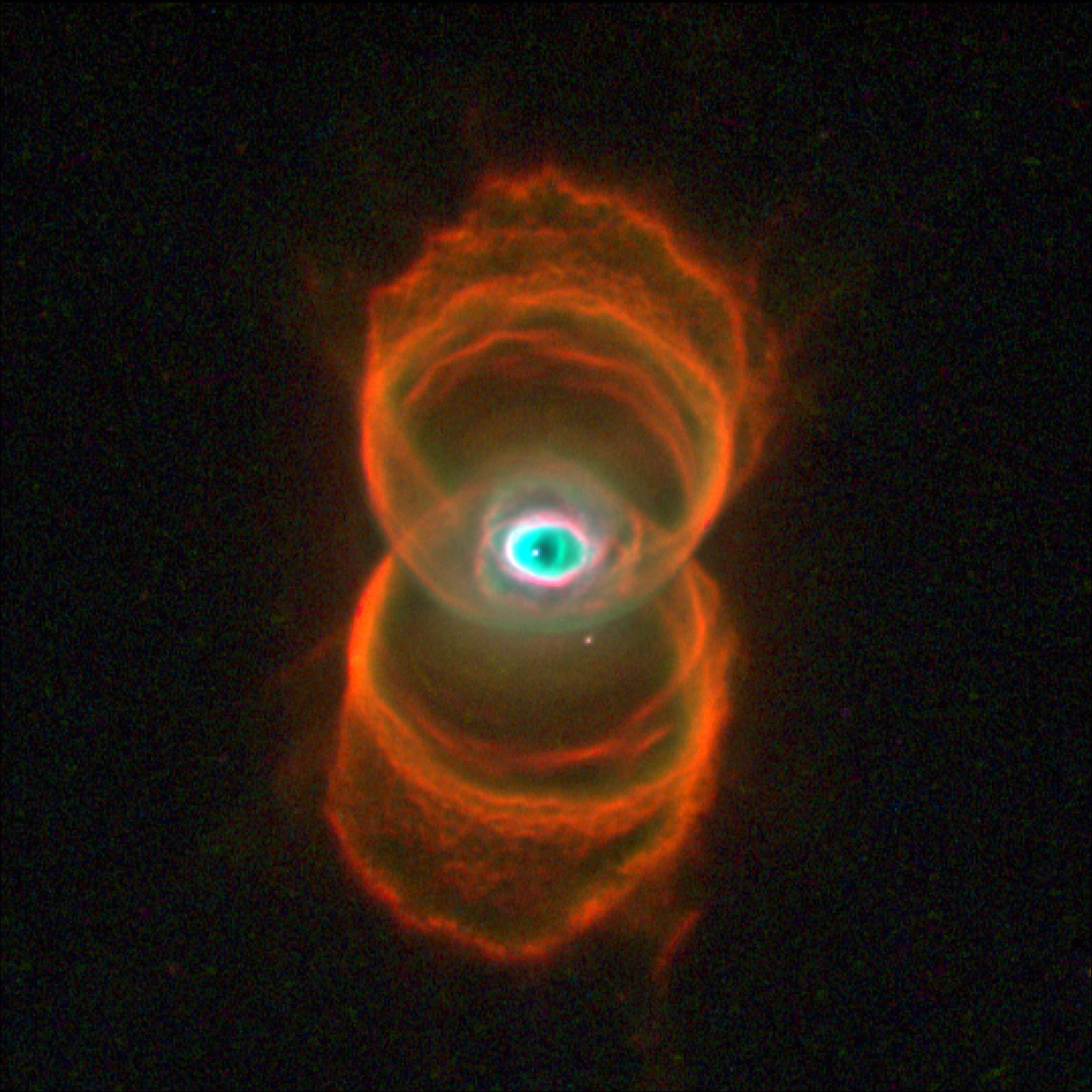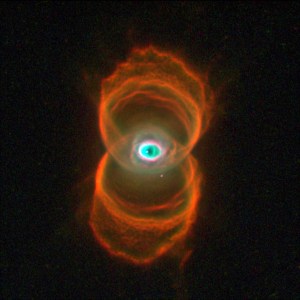
Hourglass Nebula
This is an image of MyCn18, a young planetary nebula located about 8,000 light-years away, taken with the Wide Field and Planetary Camera 2 (WFPC2) aboard NASA's Hubble Space Telescope. This Hubble image reveals the true shape of MyCn18 to be an hourglass with an intricate pattern of "etchings" in its walls. This picture has been composed from three separate images taken in the light of ionized nitrogen (represented by red), hydrogen (green), and doubly ionized oxygen (blue). The results are of great interest because they shed new light on the poorly understood ejection of stellar matter that accompanies the slow death of Sun-like stars. In previous ground-based images, MyCn18 appeared to be a pair of large outer rings with a smaller central one, but the fine details could not be seen. According to one theory for the formation of planetary nebulae, the hourglass shape is produced by the expansion of a fast stellar wind within a slowly expanding cloud that is more dense near its equator than near its poles. What appears as a bright elliptical ring in the center, and at first sight might be mistaken for an equatorially dense region, is seen on closer inspection to be a potato-shaped structure with a symmetry axis dramatically different from that of the larger hourglass. The hot star that has been thought to eject and illuminate the nebula, and therefore expected to lie at its center of symmetry, is clearly off center. Hence MyCn18, as revealed by Hubble, does not fulfill some crucial theoretical expectations. Hubble also revealed other features in MyCn18 that are completely new and unexpected. For example, there is a pair of intersecting elliptical rings in the central region, which appear to be the rims of a smaller hourglass. There are the intricate patterns of the etchings on the hourglass walls. The arc-like etchings could be the remnants of discrete shells ejected from the star when it was younger, or flow instabilities, or could result from the action of a narrow beam of matter impinging on the hourglass walls. An unseen companion star and accompanying gravitational effects may well be necessary in order to explain the structure of MyCn18.
- X



























